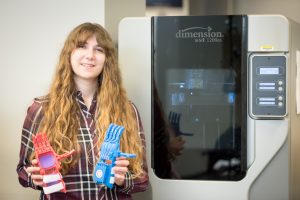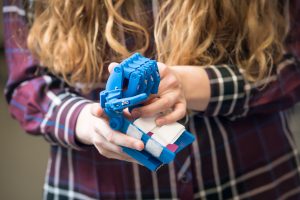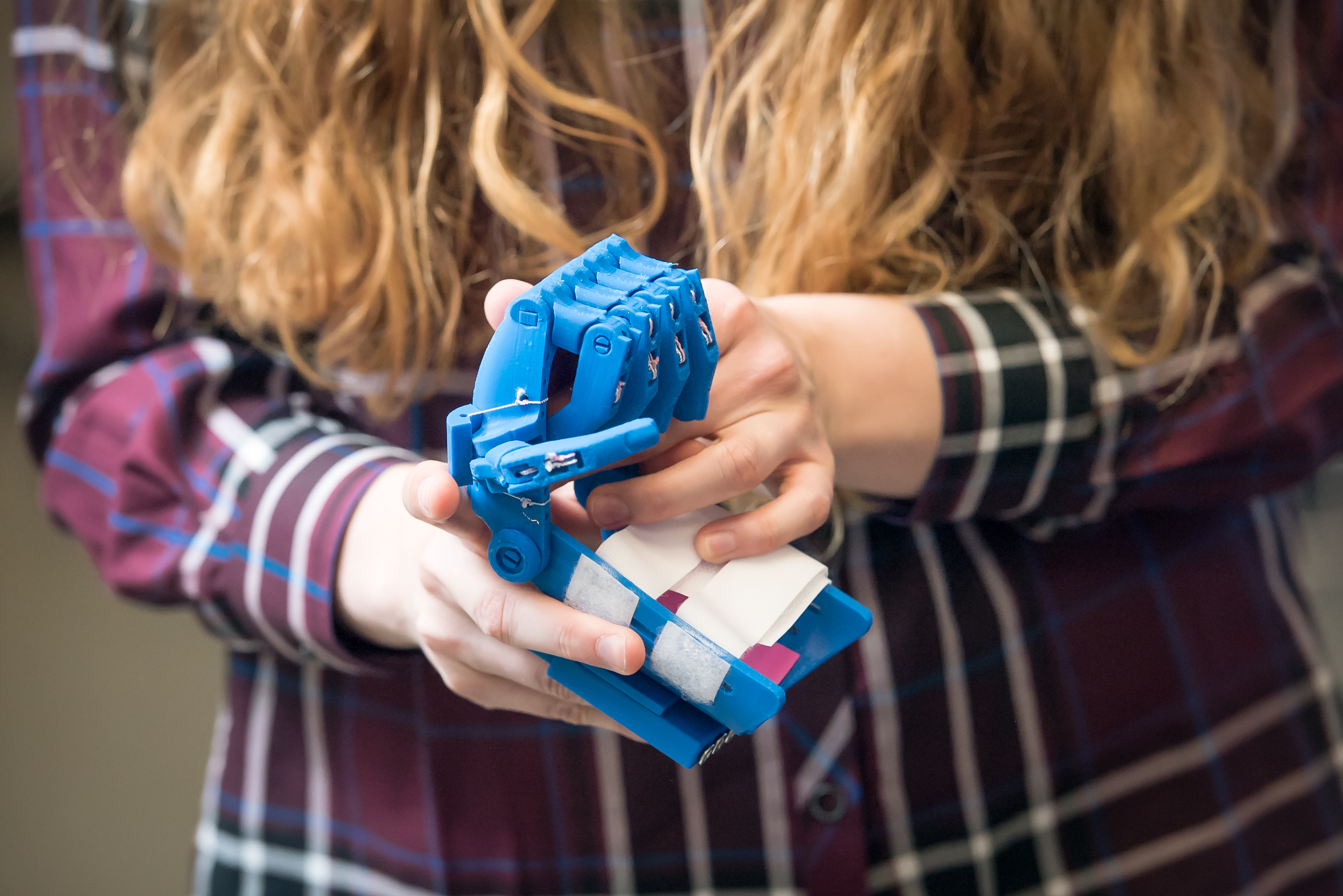
What began as simply tinkering with a 3-D printer the summer before Valerie Levine’s junior year at The University of Alabama ended with children receiving prosthetic hands before the year’s end.
“It became more than just a fun thing to do and became something where I could actually help children,” she said.
Levine established the Alabama Prosthetic Project with funding and assistance from the UA Honors College and a 3-D printer in the Computer-Based Honors Program to design and create inexpensive prosthetics for children. Levine is a student researcher in the Computer-Based Honors Program, which is soon to be renamed the Randall Research Scholars Program.
“This is such a great project to have had the opportunity to found, as it provides devices to children who may not otherwise have a prosthetic device,” said Levine, a native of O’Fallon, Illinois. “We hope to grow this project and provide as many children as possible with comfortable, functional prosthetic hands.”
The idea started last summer in the lab of Dr. Jason Bara, associate professor of chemical and biological engineering at UA, where Levine, who is studying chemical engineering, has researched since the fall of 2015. There she began to use a desktop 3-D printer on the side to learn more about the technology.
With an interest in biomedical applications of plastics and materials, Levine said she quickly took to printing prosthetics, a growing use of 3-D printing since they can be cheaper and easier fitted to an individual than conventional prosthetics.
The advantages can be greater for children, who can outgrow conventional prosthetics that can cost tens of thousands of dollars. The prosthetics Levine made cost less than $50 to create and are easier to assemble and repair, she said.
Levine modified open-source designs to create a wrist-powered hand of ABS plastic with fishing lines and elastic strung through the fingers to open and close the grip. Standard screws increase or ease the tension in the grip.
“The great thing is if they snap a finger piece, we can print them a new one,” Levine said.
She worked with prosthetic specialists, physical therapists and orthopedic surgeons at Children’s Healthcare of Atlanta and Children’s of Alabama in Birmingham to fine-tune the design to ensure what she was creating would be useful for patients.

Staff at the two hospitals helped her identify good candidates for the prosthetics, and in February she delivered three to children at The Hand and Upper Extremity Treatment Center of Georgia in Atlanta and sent a fourth to a child measured that day. Although she had worked with their parents and healthcare providers leading up to the delivery, she had not met the children.
“I was so nervous they were going to break it, but they really stood up,” she said. “Kids are perfect because they are honest so if they don’t like something they are going to tell you.”
Early on, Levine recruited the help of two other students also in the Computer-Based Honors Program: Amanda Flamerich, a rising junior studying public relations from Chelsea, to help with marketing and promotion, and Sam Sheriff, a rising junior from Alpharetta, Georgia, studying telecommunication and film, to photograph and document the experience.
The three plan to continue the side project next year and possibly beyond graduation, seeking to expand the project beyond the founding individuals.
“Other people like video games in their spare time. I like building prosthetics,” Levine said. “I really like to see the kids get fitted with them. It’s really rewarding to see them happy to be able to pick up juice boxes and tennis balls where they otherwise might not have been able to.”
